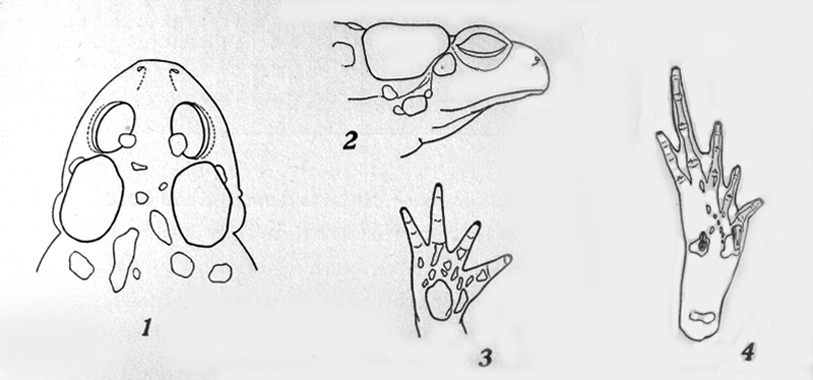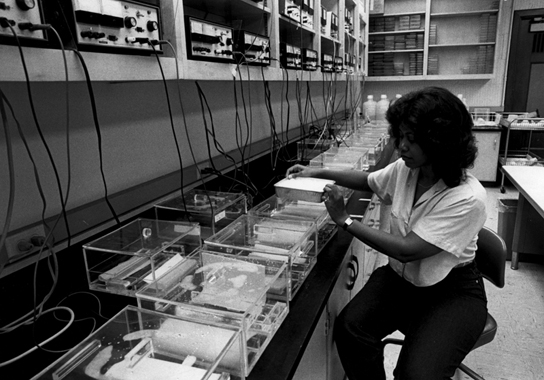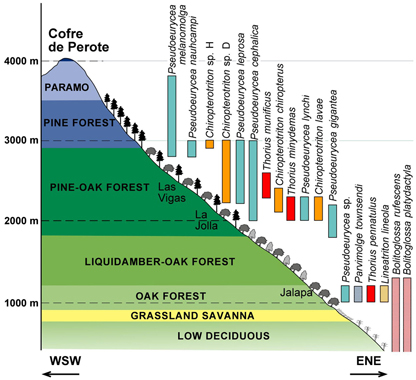What are the evolutionary relationships of the amphibia of California?

During Joseph Grinnell’s directorship of the MVZ from 1908 until his death in 1939, fieldwork was conducted almost entirely in California. Grinnell was committed to the museum’s mission “to ascertain what species of mammals, birds, reptiles and amphibians inhabit western North America, to learn their distributions as accurately as possible, to study their habits, and to attempt to discover the natural laws with control them in various ways.” For this reason, international expeditions did not begin until the mid-1920s. Some of the earliest studies of amphibians were conducted by Tracy Storer, an early MVZ employee and student, who identified amphibia as the most neglected group in North America. In his 1913 Masters thesis, Storer, studied the traits of toads in existing collections and reduced the number of described species from eleven to six. Because amphibia had been relatively ignored by taxonomists, Storer was able to make a contribution by classifying specimens that had been previously collected without making additional field trips himself.
What can we learn from studying skin coloring and body structures?

The distinctive and often vividly colored patterns found on the skin of salamanders serves as a visual representation of the genetic diversity of a population. In his 1974 thesis study, James Lynch examined the morphological variation in the Californian salamander Aneides flavipunctatus based on the cellular makeup of their skin, dissecting the salamanders to examine the reflecting platelets in iridophore pigment cells that gave them their characteristic appearance.
What can we learn from studying proteins?

Sorting salamanders into species is a process that is complicated by the many different, conflicting definitions of species. “Species are pieces of history,” wrote David Wake, former director of the MVZ and a leader of the work on Central American salamanders, “temporal stages, or segments, of a lineage within the general phylogeny.” Combining molecular techniques, like electrophoresis, with careful studies of physical appearance, made it possible to sort populations into smaller and smaller groups. The dilemma is distinguishing between different species and different populations of the same species.
Horizontal starch gel electrophoresis is one method that has helped to distinguish different species. In 1974 and 1975, field parties from the MVZ collected a species of tropical salamander in Guatemala that had not been seen since it was originally discovered and named in 1945. Modern taxonomists wondered if that species was truly distinct or if they were members of a known species that had not been properly categorized. Electrophoresis was used to compare protein similarities between the new species and a known species that lived in the same area. It was accompanied by multivariate statistical analysis, which compared physical measurements, such as head length. The end results showed clear genetic differences between the two populations: P. unguidentis was truly a separate species.
How does the environment support such a vast diversity of salamanders?

Within tropical ecosystems, the variation in terrain and vegetation provide a diversity of habitats for a variety of terrestrial salamander species that differ widely in coloration, body shape, and limb proportions. The environment shapes this extraordinary diversity by offering a multitude of microhabitats, demarcated by elevation and moisture levels, such as those created within bromeliads, logs, and under bark. A region of elevated terrain may be divided into bands of forest type based on altitude, with certain ranges of elevation corresponding to certain types of habitat. Although several species may occupy the same forest type, species in any one type of forest habitat tend to replace each other as the elevation increases.
